With so many exercises to choose from on your social media page, you're probably unsure which ones are worthwhile. You probably already know that staying active throughout the day is beneficial to your physical and mental health, but did you know that there are certain exercises you should perform on a daily basis? You might even get closer to your fitness objectives if you do them.
To determine which workouts you should do, we spoke with personal trainers to find out which ones they recommend. The best part is that you can adapt these exercises to your fitness level as you incorporate them into your daily regimen.
When you're in the gym or working out at home, try these expert-approved workouts.
7 Best Workouts You Should to Try
1. Deadlifts
The deadlift is a compound exercise that involves bending at the hips and standing back up to raise a large weight off the floor. Whether you're a novice or a seasoned weightlifter, there are numerous versions to select from. The kettlebell deadlift, Romanian deadlift, conventional deadlift, stiff-legged deadlift, sumo deadlift, and trap bar (or hex bar) deadlift are some of the varieties.
The deadlift is an excellent workout for strengthening your core, back, shoulders, and arms, as well as your glutes, quadriceps, hamstrings, and calves. The deadlift is a crucial exercise that works both the upper and lower bodies at the same time, allowing for more muscular engagement. You will burn more calories and save time. Because deadlifts target your back muscles and shoulders, your posture will improve as a result of exercising them.
If you intend to deadlift, have a personal trainer or an expert weightlifter look at your technique. When executing deadlifts, many people make the error of squatting (and overbending their knees) rather than hinging at the hips. Another mistake is not activating the upper body and core muscles and instead arching or rounding the back. Because of the pressure on your back, this can result in a lower back injury. You should also keep your neck and head in a straight line and avoid overextending them.
If you have a history of chronic back problems, a spine injury, or are pregnant, talk to your doctor or a personal trainer before trying this exercise.
2. Push-ups
The push-up strengthens your chest, triceps, back, and shoulders while also targeting your upper body. Even expert exercisers perform it wrong, despite the fact that it is a well-known exercise.
"The push-up has the advantage of being easily changed to meet your ability level. To make it more difficult, try a push-up against the wall or with your hands lifted on an elevation. Once you've mastered the push-up from different angles, you may practise them on the floor by varying up the tempo or hand positions.
Everyone should incorporate push-ups into their routine because they are a functional exercise that can be used in real-life circumstances. The push-up specifically teaches the horizontal pushing functional movement pattern, or the ability to push items away from you.
3. Inverted row
Beginners and advanced exercisers alike can benefit from the inverted row to strengthen their upper back. It also increases scapular retraction, which can help you prepare for pull-ups if that's your objective. The inverted row is typically performed with TRX suspension straps or a barbell positioned on a rack above you while in an angled horizontal position. Keep your arms completely extended above you and your body hovering over the floor.
"You can increase the difficulty of the inverted row by lowering the bar, walking your feet forward, raising your feet on a box, or adding weight. If you need to make a change, try walking your feet further back, elevating the bar higher, or bending your knees.
4. Split squats
The split squat is a single-leg exercise that requires you to balance your core. It works the glutes, quadriceps, and hamstrings. Depending on your fitness level, there are also numerous methods to make them simpler or harder. Because it's not a technical endeavor, there are fewer compensating patterns to consider.
Dumbbells, a barbell, kettlebells, or your bodyweight can all be used in the split squat. You can execute a Bulgarian split squat (another variation of the split squat) by placing your back foot on an elevated surface, or you can alter it by keeping your back foot on the floor and using your bodyweight.
5. Dumbbell squat to press
The dumbbell squat to press, or thruster, is a complex exercise that begins with a front squat and concludes with an overhead press. Dumbbells, a barbell, or kettlebells can be used to do this full-body action. It's a quick-moving power exercise that transitions from a squat to a press.
In terms of conditioning, with the correct weight and cadence, this full-body activity can significantly increase cardiovascular demand. If you have knee problems, we recommend that you only squat to parallel or just above it. This exercise can also be done seated on a box or chair. If you're having trouble overhead pressing, a squat to bicep curl is a good alternative.
6. Squats
The conventional squat is a vital exercise because it works the glutes, quadriceps, hamstrings, abdominals, and even the upper body. Dumbbells, barbells, kettlebells, and sandbags can all be used to load the squat. The squat is not only a practical activity that simulates everyday activities like sitting and standing in a chair, but it also boosts anabolic hormones and improves spine and core strength.
Squat leaps, single-leg squats, barbell back squats, front squats, goblet squats, sumo squats, and more squat variations are also available. Squats assist avoid knee problems by strengthening the muscles around the knee and improving flexibility while going through a wider range of motion.
If you're new to squats and still haven't mastered the technique, try wall squats with a stability ball between your back and a wall. Begin by standing with your feet shoulder-width apart and your back against the ball, then lowering yourself to a sitting posture by bending your knees at a 90-degree angle. Maintain a solid grip on the ball with your lower back. This tweak relieves tension on your lower back and makes squatting easier.
7. Kettlebell swing
Kettlebell exercises have gained popularity outside of the Crossfit community. The kettlebell swing is a particularly popular workout among fitness professionals. To produce an explosive movement, the whole body exercise uses your hips, core, hamstrings, glutes, and upper body. It's a great method to gain some cardio and build your posterior chain at the same time (the back of your body).
The two-handed kettlebell swing is one of our favorites since it works your entire body while also improving your cardiovascular fitness. You should have a kettlebell professional teach you the appropriate technique before performing the kettlebell swing (or any other kettlebell workout). Before moving on to swinging or snatching big kettlebells, it's important to learn the technique.
It's a fantastic all-in-one exercise, and it's crucial to maintain proper posture and generate movement with your hips. If you're just learning to swing, she recommends altering the action by lowering the kettlebell's weight until you're comfortable with it. If you have shoulder or lower back issues, you should talk to your doctor or physical therapist before performing kettlebell swings.



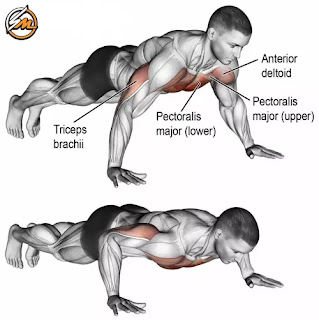
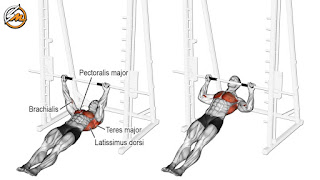
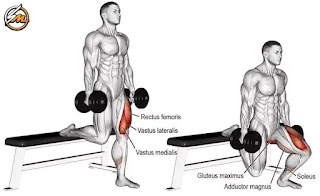
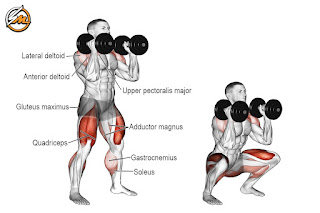
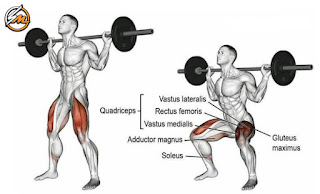






0 Comments